Is There More Downside to Come?
Australian Property Market Update
2 October, 2018
In this month’s update, I’ll highlight the 5000-year history of interest rates, yesterday’s uneventful RBA monetary policy decision, and seller reticence in light of waning demand.
But first, here are the latest property market stats…
The Auction Market
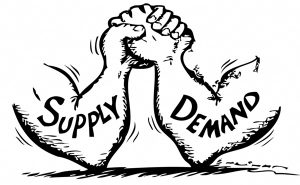
Thanks to the AFL and NRL Grand Finals, sellers were hesitant to bring their properties to market over the weekend. This is especially true in Melbourne, where only 67 homes were presented at auction. Across the country, only 889 properties went under the hammer, with a meagre auction clearance rate of 49.1 percent. This is the lowest combined capital city result since December 2012.
Keep in mind that this is just the preliminary result, which tends to be rosier than reality as agents are selective with their reporting for the sake of Monday morning headlines. The weekly pattern is for Sydney’s final result to be 4 to 5 percentage points lower, and Melbourne’s 2 to 3 percentage points lower. Expect to see the final national clearance rate closer to 47 percent after all results are counted.
Regardless where the final tally ends up, auction clearance rates are clearly trending down as supply is swelling and fewer credit-worthy buyers can be found (watch Steve McKnight’s micro-training on absorption if you missed it).
Here are the latest preliminary auction results from CoreLogic:

Source: CoreLogic
A Full Year Into the Housing Slump
We’re now a full year into Australia’s housing slump, with September marking the twelfth consecutive month of falling home prices. The aggregate dwelling price of our five largest capitals has fallen 3.91 percent, with Sydney leading the way at 6.09 percent.
Brisbane, Adelaide, Canberra and Hobart continue to be the bright spots for property investors over the past twelve months. That said, looking at the September results, Adelaide moved backwards. South Australian investors should keep a close eye on what happens there in October. It stands to reason that tougher lending criteria will to some degree impact markets across Australia, not just Sydney and Melbourne.
Here’s a snapshot from CoreLogic’s latest median house price data:

Source: CoreLogic
In the News…
So Long 5000-Year Low Interest Rates
Until a few months ago when the Federal Reserve lifted interest rates for the seventh time in three years, borrowing costs were lower than they had been in 5000 years of recorded history.

Source: Business Insider Australia
The trend toward higher borrowing costs continues. Again last week, the Fed lifted its overnight lending rate for the eighth time in three years, and signaled yet another hike before year end, plus a few more rate rises in 2019. But anyone in the USA who locked in a 30-year fixed rate mortgage three years ago isn’t too concerned.
Unfortunately for us here in Australia, there are no 30-year fixed rate mortgages. Also unfortunately for us, we do not live in an economic vacuum. As interest rates rise overseas, everyone with a variable rate mortgage in Australia could feel the cash flow squeeze within months as Aussie lenders pass their borrowing costs on to consumers in the form of higher mortgage rates.
As household discretionary income falls, this will make economic growth even more of a challenge for the RBA.
RBA: “She’ll Be Right, Mate”
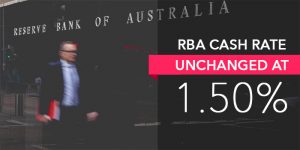 Speaking of, the RBA decided yesterday to leave the cash rate on hold for a record 26 consecutive months. The board expects the current level of monetary easing to be sufficient to spur a healthy rate of inflation. Reserve Bank governor Philip Lowe also said he’s not too concerned about the housing price downturn in Sydney and Melbourne.
Speaking of, the RBA decided yesterday to leave the cash rate on hold for a record 26 consecutive months. The board expects the current level of monetary easing to be sufficient to spur a healthy rate of inflation. Reserve Bank governor Philip Lowe also said he’s not too concerned about the housing price downturn in Sydney and Melbourne.
“Credit conditions are tighter than they have been for some time, although mortgage rates remain low and there is strong competition for borrowers of high-credit quality.”
While most economists expect the next interest rate move by the RBA to be up, the consensus is it will be 2020 before our central bank is able to lift the cost of money. But if interest rates continue to rise overseas, the next move could be down. That would be a risky move though, as it could provide temporary relief to households but at the expense of a weaker dollar and higher inflation down the road.
“Hail No, I Ain’t Sellin’”
 Sellers are pretty relaxed this Spring, maybe a little too much so. This is normally the time of year when the market is flooded with new listings. In years past, there’s been plenty of demand to mop up supply; in fact, more than enough.
Sellers are pretty relaxed this Spring, maybe a little too much so. This is normally the time of year when the market is flooded with new listings. In years past, there’s been plenty of demand to mop up supply; in fact, more than enough.
But this year, as demand is notably weaker, very few sellers seem keen to brave the market, choosing instead to hold out in hopes that the market will turn around. Listings usually increase by 3 to 5 percent heading into the spring. This year, however, listings were up only about 1 percent by September.
This seller reticence seems to indicate an optimism that the recent correction in property prices will be minor and short-lived. The perception is, come autumn, it will be a better time to list. In fact, I’ve been walking several of my clients through this very question – “Do I list now or in the new year?”
My advice has been to list now. The market is trending down, and barring an unlikely RBA rate-cut, there’s nothing indicating the market will be any better six months from now.
Is There More Downside to Come?
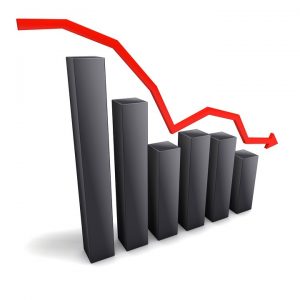 The Sydney morning herald sounded the alarm of a possible credit crunch for borrowers, indicating there could be more downside for the housing market after the banking royal commission’s damning interim report.
The Sydney morning herald sounded the alarm of a possible credit crunch for borrowers, indicating there could be more downside for the housing market after the banking royal commission’s damning interim report.
According to Capital Economics chief economist Paul Dales, “…house prices may eventually fall by 12 percent, which would be the longest and deepest housing downturn in at least three decades.”
If he’s right, the future seems pretty bright to me. If a 12 percent decline is all we get after a 70 percent rise over five years, I’d say we are indeed the Lucky Country.
Comments
Got something to say? Post a comment...
You must be logged in to post a comment.

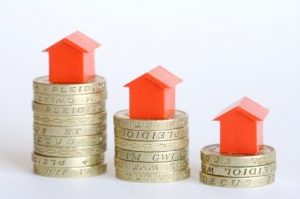
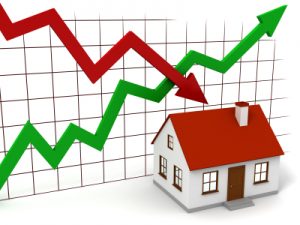




There is no clear signs that I have seen we will have any overall growth, I think certain pockets in Australia will do well and hopefully for anyone cash rich, it will lead to a great chance to pick up some fair priced properties throughout the country.
Agreed Jaxon. It’s a good time to cash up and be very selective, perhaps focusing on manufactured growth deals in more stable markets.
Hi, nice article, if 12% is all it drops then yes indeed that is not much of a concern at all especially as I heard of some projected forecasts of 20% or even higher. Obviously no one wants to lose any value on their investments/properities but riding the ups and downs is all part of the game, like you said 12% when comparing it to the gain of 70% over the last half decade is indeed not a catastrophe at all, let’s see what eventuates. I personally wouldn’t be selling in this market even though it’s Spring, I think to keep holding and exercise and practice patience are the smartest moves for now, good article, logical and simply pragmatic.
Thanks Sam. The decision to hold is certainly a valid one for the investor with a long-term perspective. If the Aussie dollar gets weaker, real estate may also be a good hedge against inflation. Fingers crossed…
Very true mate, let’s hope the “burst” will not be much and then another boom occurs. :-)